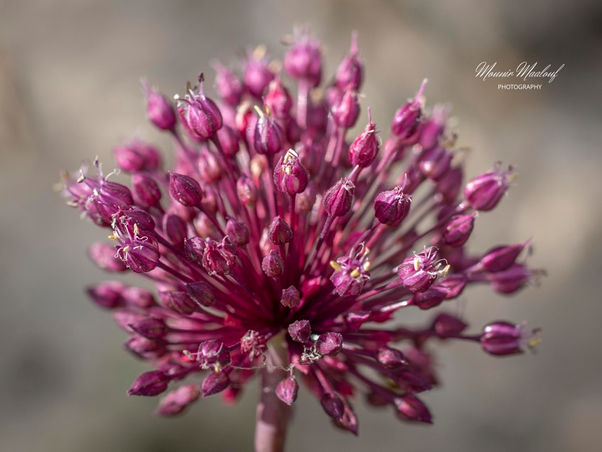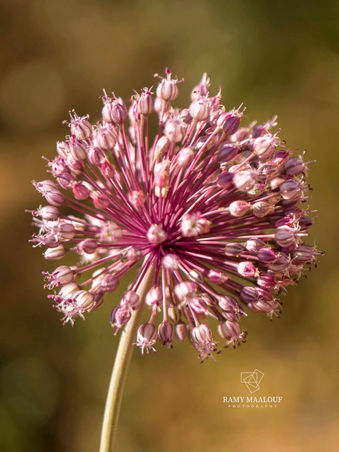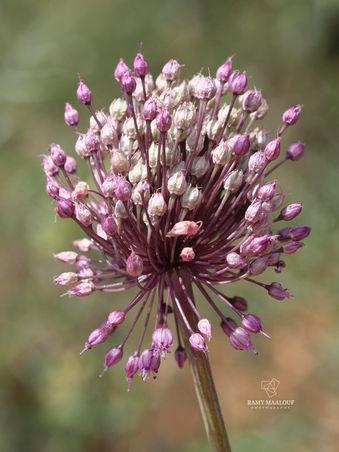Family |
Amaryllidaceae
Allium ampeloprasum
L.
Allium ampeloprasum L.
(Nouvelle Flore du Liban et de la Syrie, vol. 1, Pl. LXXXII nº 3; 1966)
Life‑form & habit : Robust mountain leek forming one or several ovoid bulbs and a single, rather elegant flowering stem that can exceed 1.5 m.
Bulb : Ovoid; outer tunics thin, whitish‑membranous, often flanked by numerous small yellowish, brown or purplish bulbils.
Stem : Cylindrical, glaucous, leaf‑clad up to about mid‑height, then bare.
Leaves : Broadly linear‑lanceolate, up to 40 cm long and c. 1 cm wide, keeled, somewhat glaucous and furnished with a short ligule; they wither only after flowering.
Spathe : Single, membranous, whitish and far longer than the umbel; soon falls away at anthesis.
Inflorescence : Many‑flowered, almost spherical to hemispherical umbel up to 10 cm across; pedicels unequal and usually furnished at the base with a small scarious bracteole.
Perianth : Campanulate, 4 – 5 mm high, rose‑purple; tepals nearly equal, keeled, the keel rough‑scabrid (sometimes scabrid over the whole back), tips blunt to slightly acute.
Stamens & style : Stamens generally longer than the perianth; outer filaments lanceolate, gradually tapering, inner filaments three‑toothed with the median anther‑bearing tooth equalling the lateral teeth; anthers very small, yellow or violet; style noticeably exserted.
Capsule : Ovoid‑trigonous, slightly longer than the persistent perianth.
Flowering period : April – July.
Habitat : Disturbed ground—fields, vineyards, waysides—and, for some varieties, higher altitudes near croplands or open woodland clearings.
Native range : Southern Europe, North Africa, Egypt and Western Asia; in Lebanon frequent from sea‑level to the mid‑mountain belt (e.g. Beirut, Nahr el‑Kelb, Zahlé, Beskinta, Bcharré, Falougha) and recorded at scattered sites in western Syria.








